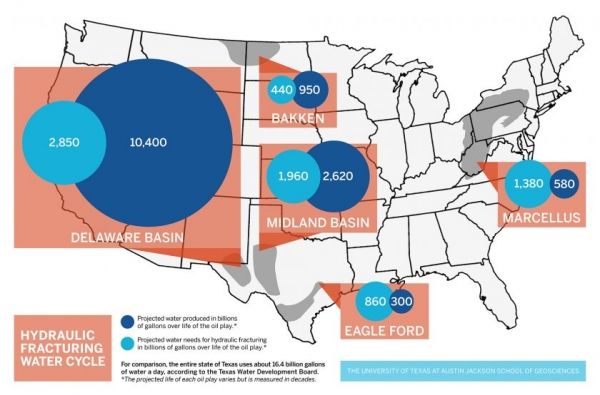But while other industries, such as agriculture, might want to recycle some of that water for their own needs, water quality issues and the potential costs involved mean it could be best to keep the water in the oil patch.
That is the takeaway from two new studies led by researchers at The University of Texas at Austin.
“We need to first maximize reuse of produced water for hydraulic fracturing,” said Bridget Scanlon, lead author on both of the studies and a senior research scientist with the UT Bureau of Economic Geology. “That’s really the message here.”
The first study was published in Environmental Science and Technology on Feb. 16. It quantifies for the first time how much water is produced with oil and natural gas operations compared with how much is needed for hydraulic fracturing. The authors also projected water demand for hydraulic fracturing needs and produced water over the life of the oil and gas plays, which span decades. A play is a group of oil or natural gas fields controlled by the same geology.
Continue reading at University of Texas at Austin
Image via University of Texas at Austin


